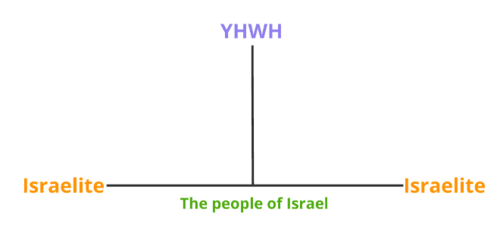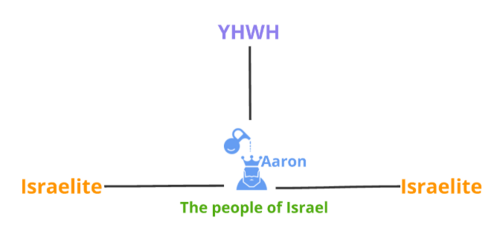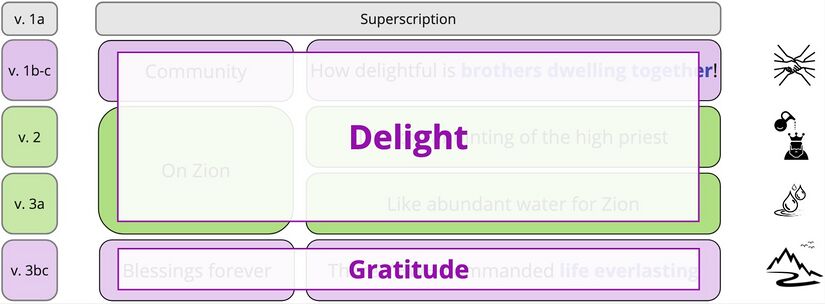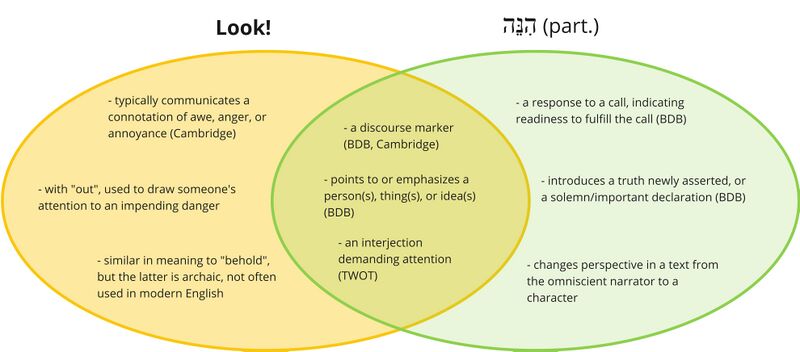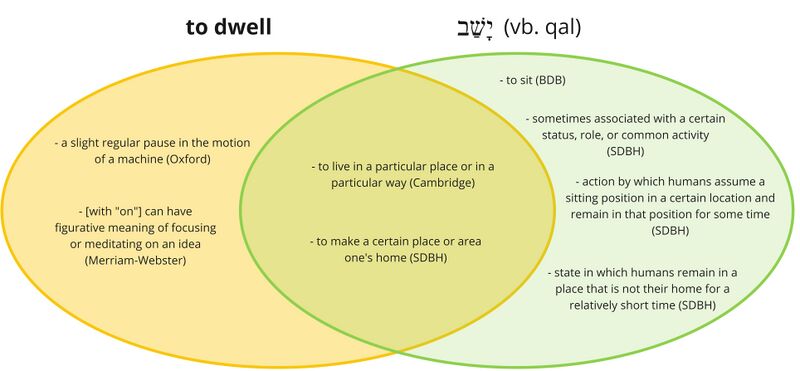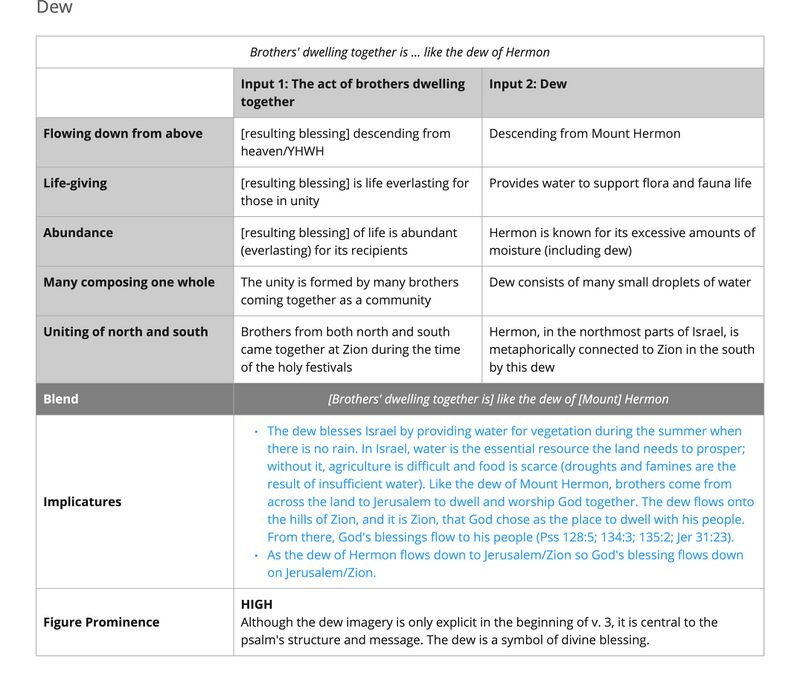Psalm 133 Translation Workflow
This is a recommended translation workflow for any translation team seeking to translate the poetry as well as the wording of Psalm 133. Following this workflow will result in three modes of translation: written, oral and song/performance.
The method followed is a ten-step process refined by Psalms that Sing in their pilot projects. The ten steps may be seen in the left sidebar.
Begin
To translate poetry accurately and beautifully, a knowledge of both the source language's poetry and the receptor language's poetry is needed. This guide assumes you have already researched and analyzed many examples from numerous genres of poetry, storytelling, and music in the target language and culture, and document findings.
The local arts analysis assumed may be summarized according to these documents:
Legend
Throughout the translation workflow, you will find sections in the below colors. They consistently mark different parts of the guide, as follows:
Discussion
Activity
Side note
Step 1. Listen
Have the group listen to the psalm in at least 2 versions, if possible–either play the audio on your computer, downloaded from the internet, or read the psalm aloud in different versions (including the Close-but-ClearThe Close-but-clear translation (CBC) exists to provide a window into the Hebrew text according to how we understand its syntax and word-to-phrase-level semantics. It is designed to be "close" to the Hebrew, while still being "clear." Specifically, the CBC encapsulates and reflects the following layers of analysis: grammar, lexical semantics, phrase-level semantics, and verbal semantics. It does not reflect our analysis of the discourse or of poetics. It is not intended to be used as a stand-alone translation or base text, but as a supplement to Layer-by-Layer materials to help users make full use of these resources. translation presented below). If more than one Language of Wider Communication is accessible to the translators, use them all, if possible.
Guidelines when reading aloud
One reader per translation or one reader for all translations (as skills permit). Others to listen with closed books. Consider how to listen (e.g., postured, with responses, in silence?).
| Text (Hebrew) | Verse | Text (CBC) The Close-but-clear translation (CBC) exists to provide a window into the Hebrew text according to how we understand its syntax and word-to-phrase-level semantics. It is designed to be "close" to the Hebrew, while still being "clear." Specifically, the CBC encapsulates and reflects the following layers of analysis: grammar, lexical semantics, phrase-level semantics, and verbal semantics. It does not reflect our analysis of the discourse or of poetics. It is not intended to be used as a stand-alone translation or base text, but as a supplement to Layer-by-Layer materials to help users make full use of these resources. | Emotions (Positive) | Emotions (Negative) |
|---|---|---|---|---|
| שִׁ֥יר הַֽמַּֽעֲל֗וֹת לְדָ֫וִ֥ד | 1 | The song of the ascents. By David. | Anticipation | |
| הִנֵּ֣ה מַה־טּ֖וֹב וּמַה־נָּעִ֑ים שֶׁ֖בֶת אַחִ֣ים גַּם־יָֽחַד׃ | Look, how good and how delightful is brothers' dwelling—even together! | Delight Joy
| ||
| כַּשֶּׁ֚מֶן הַטּ֨וֹב | עַל־הָרֹ֗אשׁ | 2 | [It is] like the good oil on the head, | Joy | |
| יֹרֵ֗ד עַל־הַזָּ֫קָ֥ן זְקַ֥ן אַֽהֲרֹ֑ן | flowing down onto the beard, the beard of Aaron; | |||
| שֶׁ֜יֹּרֵ֗ד עַל־פִּ֥י מִדּוֹתָֽיו: | which flows down onto the collar of his garments. | |||
| כְּטַ֥ל חֶרְמ֗וֹן | 3 | [It is] like the dew of Hermon, | ||
| שֶׁיֹּרֵד֘ עַל־הַרְרֵ֪י צִ֫יּ֥וֹן | which flows down onto the hills of Zion. | |||
| כִּ֚י שָׁ֨ם׀ צִוָּ֣ה יְ֖הֹוָה אֶת־הַבְּרָכָ֑ה חַ֜יִּ֗ים עַד־הָֽעוֹלָֽם: | For there YHWH has sent the blessing—life everlasting. |
English Translations
- Close-but-ClearThe Close-but-clear translation (CBC) exists to provide a window into the Hebrew text according to how we understand its syntax and word-to-phrase-level semantics. It is designed to be "close" to the Hebrew, while still being "clear." Specifically, the CBC encapsulates and reflects the following layers of analysis: grammar, lexical semantics, phrase-level semantics, and verbal semantics. It does not reflect our analysis of the discourse or of poetics. It is not intended to be used as a stand-alone translation or base text, but as a supplement to Layer-by-Layer materials to help users make full use of these resources.
- Close-but-ClearThe Close-but-clear translation (CBC) exists to provide a window into the Hebrew text according to how we understand its syntax and word-to-phrase-level semantics. It is designed to be "close" to the Hebrew, while still being "clear." Specifically, the CBC encapsulates and reflects the following layers of analysis: grammar, lexical semantics, phrase-level semantics, and verbal semantics. It does not reflect our analysis of the discourse or of poetics. It is not intended to be used as a stand-alone translation or base text, but as a supplement to Layer-by-Layer materials to help users make full use of these resources. (dramatic)
Hebrew
- Hebrew
- Hebrew (dramatic)
Step 2. Familiarize & Warm Up
A. Exploring the main themes/emotions
- “But the land could not support both Abram and Lot with all their flocks and herds living so close together.”
- There was not enough crops and water to be able to support so many animals–Abram and Lot had to compete for the survival of their flocks.
- They had to separate, as we read in v. 9.
Keep these ideas in mind as we discuss our psalm today.
It’s common for a psalm to allude to another part of the Old Testament by using key words from the other OT passage. Here, in the Genesis passage, verse 6 repeats two times a Hebrew phrase that means ‘dwell together in unity’. The verse says that the land made it impossible for Abram and Lot to dwell together in unity. And this is the exact phrase that is used as a key phrase in Psalm 133: “How good and pleasant when brothers dwell together in unity….”
Psalm 133 uses imagery to paint a picture of a land blessed by God, abundant in water, where brothers CAN dwell together in unity. This psalm is a celebration of this blessing and this unity–where greater blessing brings greater unity, and greater unity brings greater blessing.
Abram and Lot were sad because they had to part ways because the land couldn’t support them both. The Genesis passage repeats twice that they could NOT live together in unity. But Psalm 133 flips that on its head, and celebrates a land blessed by the unity of its inhabitants, so blessed that it can now support brothers living together!
B. Engaging with what led to the psalm
If needed, begin by re-listening to the psalm one or more times. Then, lead a discussion by asking the team these questions. Listen to their responses, and then present the information for each question to them, whether orally or by using the visuals. Ensure good understanding of each section before moving to the next question. The idea is to let them verbally process their own ideas, and you as the facilitator fill in the gaps in their knowledge by providing the exegetical information in the answers to these questions.
- A celebration of unity/community anthem/traveling song.
- Here are some key ideas to understand this psalm:
- Zion, another name for Jerusalem, was where the Temple was located and was considered the meeting place between heaven and earth (cf. Pss 2:6; 78:68-69). It was also where the Israelites made the pilgrimage a few times a year for the holy festivals commanded by YHWH (Lev 23).
- Aaron was the first high priest in Israel and he serves as a symbol for the office of high priest (Keel 1976, 76). "Through the priestly institution the Lord assured his people of forgiveness and blessing (Ex 29:44–46; Lev 9:22–24; Nu 6:24–26)”.
- When YHWH established his covenant with the people in the wilderness, this covenant involved blessings (≈ life) for covenant faithfulness and curses (≈ death) for covenant unfaithfulness (Deut 28-30).
- Mount Hermon was the highest mountain of the land of Israel, located in the far north, known for its abundant dew and thus an important water source for the arid land.
Activity
If time permits, have a volunteer from the team summarize the cultural idea in their own words (one volunteer for each idea).
- Discussion
- Here is the set of events that we think led to the composing of this psalm:
Activity
Act out this narrative as a team.
- To celebrate unity in worship, especially at Zion for holy festivals that were attended by the whole nation of Israel.
- He also wanted to emphasize the role of the priesthood to mediate the relationship between YHWH and his people, which is integral for both living in unity, and for receiving the blessings it brings.
- With the beautiful descriptions of unity in the psalm, it’s possible he also wanted to persuade the people of Israel to pursue this unity all the time.
- This psalm is certainly about unity…most clearly, unity among people of Israel. We’ll show this with a horizontal line connecting the brothers.
Activity
- Have the team copy this drawing, using symbols instead of words if desired, on their own papers.
- But there’s another unity in focus in the psalm, too: the unity between God and his people. This unity was made possible by the high priest and the other priests, who served as the intermediaries between God and Israel at that time. We can show this unity by adding a vertical line between YHWH and Israel.
- Then, we can place Aaron (representing the high priesthood) right in the center of those two lines, as the intermediary between God and his people. The unity between people is both made possible by the relationship between God and his people; and, it leads to the blessing of the people by God because of their obedience to him by living in unity.
- As with many psalms, this idea of covenant between God and his people is key!
C. Walk through the psalm, itself
Display/project or print out the following diagram, and walk the team through it. The first column on the left shows the verse numbers, the next column shows the main sections of the psalm, the next shows the subsections within each section (along with a summary of the content), and the last column contains an icon that visually summarizes the content.
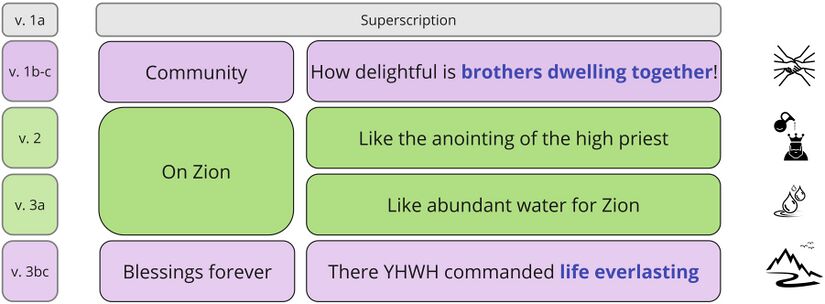
Have the participants create a gesture for each main section of the At a Glance, to remember the section titles ("Up to Zion," "Down to Zion," "In Zion"). The group should all agree on the gesture before adopting it. They will use these gestures throughout the internalization process. Ask them to make the gestures EACH time they hear the psalm, or when they try to retell it in their language.
Next, show/hand out this diagram, which is the sections of the psalm with each section’s dominant emotional tone.
Suggested question for the team
- In summary, what is the main point/message of the psalm?
- What does this Psalm teach you about the LORD?
- How could your church (or you) use this psalm?
- What heading or title would the group suggest for this psalm?
Step 3. Internalize
Absorbing the content and context of the psalm using the Overview video
Goal: Understand and internalize the main ideas in each stanza and be able to express them in your own language (not with all the details at this point).
Note: Here is the link for the video: Overview video in English / Overview video in French.
If connectivity/electricity is a problem, feel free to simply refer to the video script (English/French) and slides (English/French). Facilitators can download and manipulate the script and slides as desired--read aloud the script while showing the slides in digital or printed form; or they can pick and choose selected parts of the script to use instead of the entire thing.
A. Big-picture understanding
- Play the first two chapters of the video: “Introduction/Sections du psaume/contenu emotionnel”, and “superscription/context”.
- This is a good time to have the team revisit the gestures they created in the previous step, while looking at the visualization with the sections.
Discussion
Note the good ideas that arise.
B. "Community"
Activity
Storyboarding for poetry—Using paper and pens/markers/crayons, the participants will each draw an image or several images to remember the content of this section. They may draw whatever they find helpful to them, without worrying about how others might understand their images. No text is allowed in their drawings.
C. "On Zion"
Activity
Do the same activity as in step 2 (Chapter 3 of the video above). It’s recommended that they make drawings based on the two metaphors/images of oil on Aaron and dew from Hermon, and perhaps the “go down” repetition:
Storyboarding for poetry—Using paper and pens/markers/crayons, the participants will each draw an image or several images to remember the content of this section. They may draw whatever they find helpful to them, without worrying about how others might understand their images. No text is allowed in their drawings.
Since this section of the psalm contains 2 key poetic features, let’s stop and examine those features now.
- If helpful, show visuals for Poetic Features 1 and 2 (below), and explain each one orally. The participants may receive these features as a handout, but they are also welcome to take notes at this point. Encourage them to ask questions if they don’t understand.
- Remind them that the goal is to understand the function of the Hebrew poetic device, not to replicate its form. Whenever you are studying a Hebrew feature, continually ask yourself:
Discussion
Then, have them discuss if they might be able to use “text painting,” as demonstrated in Feature 2. How might they use their voice to show a soft, soothing and even liquid quality, using either sound choices or volume, etc? How might they do this musically?
Give them at least 15-20 minutes to discuss these questions, and they can write down notes, if they wish.
D. "Blessings Forever"
Activity
Do the same activity as in the previous chapters of the video:
Storyboarding for poetry—Using paper and pens/markers/crayons, the participants will each draw an image or several images to remember the content of this section. They may draw whatever they find helpful to them, without worrying about how others might understand their images. No text is allowed in their drawings.
- Have the translators refer to these drawn images to aid them in the following steps of the composition and checking process.
Step 4. Compose
Beginning to craft a song translation of the psalm
Once the artist-translators have sufficiently internalized the psalm, they can begin composing their song translations. Begin this process with a discussion based on the big-picture information that has been learned and internalized so far.
Discussion
- The original genre is to celebrate the blessings of covenant living
- The theme is the High Priest connecting the covenant community with YHWH's blessings.
- The emotions are delight and gratitude.
Refer to Local Arts Analysis of the receptor language.
Once these decisions have been made, the team can begin practicing the melody, just focusing on these big ideas and not worrying too much about word and phrase translation decisions just yet (that will be explored in the next step). Try to capture the main ideas and whatever they can remember from the psalm, in song form.
Do not allow them to look at the text of the psalm yet, but DO encourage them to use their gestures or images created in the last step.
If desired, they may make a recording of what they create in this step, for reference in proceeding steps.
Step 5. Draft
Orally translating section-by-section
In this step, the psalm is translated orally, section by section, while specific exegetical and translation issues are addressed.
Main Procedure for This Step
-
Since this psalm is so short, simply read aloud or play the audio of each section one at a time. Here are the sections, based on the
- Verse 1b-c: Community
- Verses 2-3a: On Zion
- Verse 3b-c: Blessings forever
- After listening to each section (at least twice), discuss the section-specific info below with the translators, using the Translation and Performance Notes (in pdf) for each word, phrase, or image. Remember what role that PART/SECTION plays in the WHOLE psalm.
- Ask the translators what words or phrases they found difficult to translate in that section. Looking at the Translation and Performance Notes (in pdf), explain the word or phrase, and then have the translators discuss the translation options in their language. Try to arrive at decisions for each of these, unless they are taking too long to discuss—in which case, the discussion should continue later, perhaps even another day.
- After listening to each section and discussing the translation issues, have the group make an oral translation of just that section. Make an audio recording of each section’s translation, and if desired, type a transcription of the translation, too (If not, the whole translation will be transcribed later).
- It might be easier to “orally translate” using their selected melody from the previous step, to ensure that syllable counts work for each line in the melody. So, the team may simply speak their translation first, then try to adapt it to work with the melody; or, they orally translate by singing. Experiment to see what works best for your team.
- Imagine and experiment with the content in your own language! Remember, we are still aiming for naturalness over accuracy, as we will focus on accuracy later in step 7.
- Seek balance, rhythm, figurative language, beauty, poetry…
Activity
Discuss what title you would like to give the psalm in your language. You don’t need to make a final decision at this point.
Section-specific information
- Community (v. 1b-c)
- Words/phrases/imagery to be sure to discuss, using the Translation and Performance Notes (in pdf):
- The phrase How good and delightful is made prominent by the word Look! (הִנֵּה) that precedes it, which is a classic attention-getting device in Hebrew.
- A few English translations render the word Look! as Behold (ESV, NASB, KJV), which is not typical English today. Some French translations render it Oh ! (TOB, BDS, S21), Voici (NVS), Oui (NFC), and some Spanish translations render it Mirad (RVR, BTX) or Vean (DHH). However, some translations in all three languages leave it untranslated (NIV, NLT, CSB, NRSV, French PDV, Spanish NVI). While we recommend translating the word, bear in mind that it does not necessarily need to be rendered as a verb of seeing. An appropriate attention-getting word in the local language should be chosen; for example, the Hausa CLB says Truly/really.
- The following diagram compares the Hebrew term with the English word look! Definitions in the yellow left side apply only to the English word, while definitions in the green right side apply only to the Hebrew word. Definitions in the middle, where the shapes overlap, apply to both the English and Hebrew words:
- The phrase How good and delightful where brothers dwell together may be understood as the thesis statement for this psalm, with everything that follows in the psalm supporting this statement.
- All three of the verses in this psalm begin with a clause that lacks a verb, and all the verbs that do appear in other clauses of these verses suggest a situation that is timeless or repeating, even though the psalm was written for specific gathering times.[1]
- The phrase how good and [how] delightful has some important features for translators:
- The word how introduces an exclamation, not a question.
- The repetition of the word how (מָה) in the Hebrew serves to emphasize each adjective good and delightful.
- The Hebrew word for good (טוֹב) is the same one used throughout Genesis 1, when God repeatedly described his creation as "good"—meaning that it has qualities that make it useful or desirable.
- In some languages, an adjective cannot be the subject of a sentence. In such cases, one possible strategy is to translate these adjectives as noun phrases. An example is the Hausa CLB:
It is a good thing, a pleasant [thing] also.[2]
- The meaning of the phrase brothers dwell together (יָשַׁב אַחִים גַּם־יָחַד) is ambiguous: does it refer to unity among people in general? Or is it referring to a more specific instance of unity, or perhaps unity among specific parties?
- In short, we favor the interpretation that the "dwelling together" in this psalm refers to a specific (recurring) instance of unity—the holy festival gatherings at the Temple in Jerusalem, where the whole nation would gather three times a year.
- See our exegetical issue The meaning of יָשַׁב אַחִים גַּם־יָחַד in Ps. 133:1 for a full discussion.
- Brothers (אַחִים) in this instance refers to "the extended family structure of ancient Israel, where brothers would often live in proximity to one another (Deut 25:5), giving the family greater social prominence and security." However, in this psalm’s later usage in Israel’s worship, it probably was expanded to mean unity within the spiritual community, as well.
- When translating, try not to use a term that refers only to biological family, or just to males.
- The Hebrew verb dwell is an infinitive form (literally, "to dwell" or "the dwelling").
- Some English translations render this verb as to dwell / to live. To create a smooth English translation, they supply the word for also, resulting in for brothers to dwell/live (NASB, GNB, NASB). French translations use the infinitive form and supply the word pour ("for").
- Other English translations render the verb in the present tense as dwell / live, and supply the word when (ESV, NLT, CSB, NET, NRSV, NIV), resulting in the translation: when brothers dwell. Later in the psalm, YHWH blesses a place ("there," see notes on verse 3bc), and this place appears to be the location in which brothers dwell together. So, while we render the verb in the present tense, we prefer to supply the word where to introduce the phrase. Spanish translations also use the present tense and supply the word que ("that"). Furthermore, not every language requires a supplied word for the present tense (see Hausa CLB).
- The following diagram compares the Hebrew term with the English word dwell. Definitions in the yellow left side apply only to the English word, while definitions in the green right side apply only to the Hebrew word. Definitions in the middle, where the shapes overlap, apply to both the English and Hebrew words:
- The Hebrew phrase we have rendered together (גַּם־יָחַד) does not simply mean "in close proximity" but rather refers to being together in unity.
- Many English translations make this clear (ESV, KJV, NASB, NLT, NRSV; CSB, GNB: together in harmony).
- Most French translations do not bring out this sense, but an exception is the NVS, which says unis ensemble.
- Spanish translations bring out this sense with en armonía ("in harmony," RVR, NVI, BTX) or unidos (DHH).
- The Hausa CLB says together as one.
- On Zion (vv. 2-3a)
- Words/phrases/imagery to be sure to discuss, using the Translation and Performance Notes:
- This verse supplies the first instance of imagery that expands on the thesis statement that brothers dwelling together is good and pleasant from verse 1. In fact, this entire verse combines several images to form a description of oil which flows down from Aaron</name>’s head to his beard, and then to the collar of his garments. This imagery has the following key features:
- The name Aaron here serves as a symbol for the high priesthood.[3]
- Aaron may be an unknown figure in many cultures; to make his significance clear, translators can either supply an explanation in a footnote (see French NVS) or within the text itself. This is the strategy of the Hausa CLB, which says Aaron our priest.
- The Spanish DHH actually replaces the word Aaron with the priests, but this is not recommended.
- The phrase describes the journey of the oil from the top of Aaron’s head down to Aaron’s beard, and then continues further downward to the collar of his garment.
- The syntax of the Hebrew says: on the head, which flows down on the beard, the beard of Aaron, which flows down on the collar of his garments.
- The name Aaron here serves as a symbol for the high priesthood.[3]
This order may be difficult to follow in many languages, especially because the phrasing makes the owner of the head and beard difficult to identify at first.
- Some languages may require the addition of prepositions such as from to make the direction of the movement clear.
- One strategy to solve both of these problems is that of the Hausa CLB: from the head of Aaron our priest onto his beard, from his beard all the way onto the neck of his shirt.
This rendering retains the repetition of the word beard while making clear the direction of the oil’s movement and the owner of the head and beard.
- The oil is a fine, spiced oil that was applied to the head (anointing) to mark special occasions, such as the ordination of a priest (Exodus 30:23–25, 30), or to welcome guests and refresh their skin in an arid climate (Psalms 23:5; 92:10; 141:5).
- Most English translations render the phrase the finest oil as precious oil or fine oil. Some translations make it clear that this oil was anointing oil (GNB, NLT). Hausa CLB says valuable anointing oil.
- The anointing of the High Priest with special oil was associated with joy and beauty.
- Among many other possible meanings, perhaps the two most prominent associations between this oil imagery and the psalm’s theme, unity, are:
- 1. Setting apart as holy / fit for serving YHWH. The image of oil suggests the anointing of the high priest to begin his service in the Temple, where he will serve as intermediary between YHWH and his covenant people. Similarly, when the people are obedient to the commands to attend the holy festivals in Jerusalem and to live peaceably with each other, their obedience sets them apart as holy and fit for service to YHWH. The obedience from living peaceably together is what prompts blessing from YHWH (see verse 3bc).
- 2. Refreshment. Just as oil on the head would refresh a person in a hot and dry climate, so would unity bring spiritual refreshment to the people and land (see verse 3a) of Israel.
- The oil is a fine, spiced oil that was applied to the head (anointing) to mark special occasions, such as the ordination of a priest (Exodus 30:23–25, 30), or to welcome guests and refresh their skin in an arid climate (Psalms 23:5; 92:10; 141:5).
- The name Aaron here serves as a symbol for the high priesthood.[4]
- Aaron may be an unknown figure in many cultures; to make his significance clear, translators can either supply an explanation in a footnote (see French NVS) or within the text itself. This is the strategy of the Hausa CLB, which says Aaron our priest.
- The Spanish DHH actually replaces the word Aaron with the priests, but this is not recommended.
- The name Aaron here serves as a symbol for the high priesthood.[4]
- Verse 3a provides the second piece of liquid imagery: dew, which flows down from Hermon on the hills of Zion. Like the imagery in verse 2, the imagery here illustrates the thesis statement in verse 1 that it is good and delightful [where] brothers dwell together. This imagery contains some important features:
- The word dew refers to moisture that collects on the ground during the night.
- Hermon refers to Mount Hermon, which is the tallest mountain in Israel, and is known for producing large amounts of dew.
- Translators may want to supply the word mountain in order to make the identity of Hermon more clear (see French PDV: la montagne de lʼHermon; French NFC: mont Hermon; Spanish DHH: monte Hermon; Hausa CLB: Tudun Harmon).
- Translators may supply a preposition besides of to indicate the relationship between the dew and Mount Hermon. The Hausa CLB says dew on top of Mount Hermon.
- Mount Hermon was located in the northernmost part of the territory of Israel, and its water runoff provided life and refreshment for much of the land surrounding it. Water for crops was also regarded as a sign of God's favor and blessing. The mention of Zion in 3b, which is in the south of the region, could also metaphorically point to the unification of the whole land of Israel during these festival gatherings in Jerusalem—north (Hermon) and south (Zion) coming together. See the imagery table below for more details on the comparisons.
- Zion was itself a single hill. Since the hills in the phrase the hills of Zion are plural, the phrase probably refers to the hills located in the region of Zion, and not the hills called Zion.
- So, translations that render this phrase as the mountain of Zion (French Louis Segond)
or Mount Zion (NIV, French BDS) are incorrect.
- Blessing Forever (v. 3b-c)
- Words/phrases/imagery to be sure to discuss, using the Translation and Performance Notes:
- YHWH is God’s proper name (not a title such as lord), which he commanded his people to call him in Exodus 3:15. For more guidance about how to translate this name, see the “Names/Titles of God” document.
- The verb translated as has sent (צִוָּה) is often glossed as "commanded"; but when used with blessing, the sense is "to send."[5] Though this verb form normally indicates a completed action, this is a special case called a gnomic perfective, where the perfective "may be used with habitual meaning in the sense that a single instance exemplifies a recurrent situation."[6] So, translators can understand the sending of blessing as being an event that repeats habitually.
- Verse 3c clarifies just what exactly is the content of the blessing that YHWH sends: life everlasting. This is the refreshment that Israel needs, much like the oil and dew refresh. Translators may find it more natural to reverse the order: everlasting life. This is, of course, not to be understood literally: this does not mean that the people of Israel will never die; rather, it is referring to spiritual life.
- Verse 3c clarifies just what exactly is the content of the blessing that YHWH sends: life everlasting. This is the refreshment that Israel needs, much like the oil and dew refresh. Translators may find it more natural to reverse the order: everlasting life. This is, of course, not to be understood literally: this does not mean that the people of Israel will never die; rather, it is referring to spiritual life.
Step 6. Transcribe
Making a written draft
Activity
Transcribe the recordings of each section onto paper or a computer—or, compile the transcriptions of each section, if done already in previous steps.
Before moving on to the exegetical check, check the transcribed draft for the following. This should be done as a whole group, looking at the psalm projected onto a screen or wall. It is up to the facilitator to make this step move on at a good pace, but getting this out of the way at the beginning will help the exegetical and poetical checks that follow to stay focused on essential matters.
- Versification: put the verse numbers into the psalm, if it’s possible to divide each verse’s information neatly within the song.
- Check that the number of the psalm, and any superscription, are in place at the top. (Superscriptions are often left out completely—this is not advised! If not present in the song/oral translation, it should at minimum be included in the written translation.)
- Put in the section breaks.
- Correct the punctuation, in particular finding out where the sentences should end. Different groups use different approaches; our preference is to use capital letters only for the beginning of sentences, not for the beginning of each verse.
- Correct the spelling. You may find that there is a lot of discussion over this. The group needs to have consistency but also needs to abide by any government guidelines.
- Have the team or one selected team member create a back translation into a Language of Wider Communication understood by you the facilitator and by the consultant. Raise any questions you have about the back translation at this point. The back translation just needs to be comprehensible, it does not need spell checks etc. The facilitator and consultant are the only people who need it. However, without a good back translation, you cannot understand what is going on.
- Check the line divisions.
Step 7. Content Check
Checking exegetical faithfulness
The purpose of this step is to check the content for faithfulness and trustworthiness to the source translations (whether Hebrew or some other version(s)). Review the draft translation in detail, using the oral recording of Step 5 or the transcription of Step 6.
This is the step where a consultant check would be most appropriate. If no consultant is available, you, the facilitator, may use the Translation and Performance Notes (as well as any other desired exegetical materials, such as Layer by Layer’s resources) to conduct an exegetical check of the psalm. Don’t forget about big-picture accuracy as well as accuracy on the level of word and line.
Big-picture elements
Purpose
- To celebrate the blessings of covenant living
Message
- The High Priest connects the covenant community with YHWH's blessings.
Sections and emotional arc
Step 8. Poetry Check
Comparing and weighing the poetic features
Attention now needs to be given to Hebrew poetic devices compared to the poetic devices which occur in the receptor language (which might serve a different function). This is the point where the Poetic Features may be revisited, and the whole team can examine the translation to see if the functions of these features are represented in either the wording or the performance choices.
This check can be led by the consultant and/or the facilitator, collaborating with the team.
Repeated words and the imagery of Flow
The words that the psalmist chose to repeat (quite significant for such a short psalm) contribute to the liquid imagery (oil and dew</image>) that is being conveyed. As the audience hears the repeated verbal idea of flowing down, combined with the frequent onto.... onto.... onto... it reinforces the mental image of liquids cascading downward, much like the blessing of life everlasting that YHWH gives. The end, or destination, of this downward movement of blessings is Zion (v. 3a), the place where YHWH has sent his blessing. Zion is the place of meeting between heaven and earth; God's blessings come down to Zion, and God's people come up to Zion.
Liquid sounds
A skilled poet like David would be able to identify the softer and harsher sounds in his language, and use them to his poetic advantage. There's good evidence that the Hebrew poets often employed sound play to imitate real-life sounds--often called "text painting" by musicians and artists. Here, these "flowy", unobstructed sounds mimic the sound of flowing of water or other liquids (like oil) (cf. Eccl. 1:7, which uses lamedh and mem to imitate the rolling and depth of moving waters [Zogbo and Wendland 2020, 44]). The sounds of lamedh and resh, especially, are associated with the flowing of liquid (cf. Kirtchuk 2011, 135), so it's not surprising to see that the section with the liquid metaphors of oil and dew (2a-3a) are filled with these consonants, as well as the rounded O vowel.
Step 9. Finalizing
Preparing the final version of an authenticated translation
Preparation of the final versions which will serve as an authorized translation—in oral, written, and song/performance formats.
- Check the spelling of your transcription and backtranslation.
- Check the punctuation, for instance: whether there are appropriate commas for pauses, the in-setting, and the layout of paragraphs to represent stanza segmentation.
- Check the line divisions of your transcription and backtranslation.
- If not already done, make a new oral recording of a reading of the written translation (which should be the transcription of the song translation). You want to ensure that the final translation decisions are consistent across all 3 mediums—oral, written, and song. Put audio recordings of the oral translation and song into your chosen software such as AVTT, APM, or Audacity (with a robust file-naming system if using Audacity, to avoid file confusion with different drafts of the translation).
- Copy the final written translation into Paratext.
Step 10. Perform
Performing the song translation of the psalm
Have the team rehearse the song translation with corresponding dance and instruments. When ready, make a video recording of the song.
Final Checklist
At the end of the process for each psalm, there should ideally be three products:
- Transcription/written translation: An authorized, authenticated, or officially written draft in AVTT and Paratext.
- Oral Reading: A recording of a dramatic reading or recitation of the whole psalm, using the authenticated version word-for-word, recorded in AVTT.
- Whole Psalm Performance: A recording of a performance of the whole psalm, using the entire authenticated version but with freedom to adapt it for authentic performance, recorded in AVTT.


